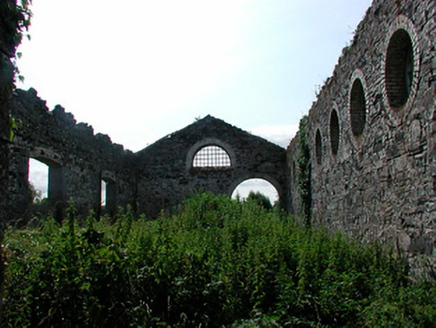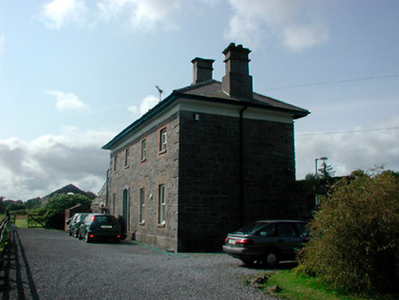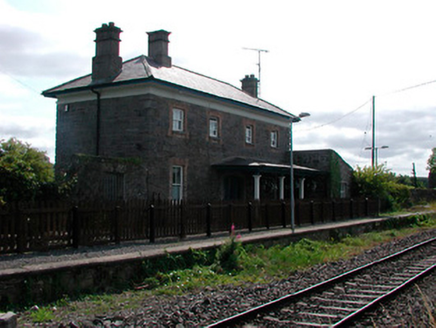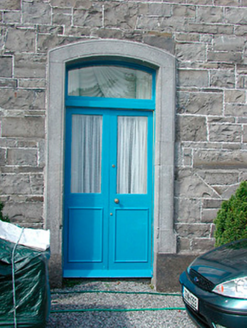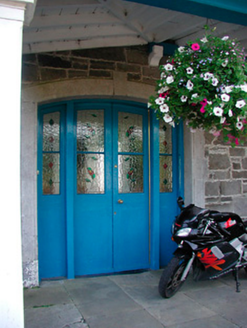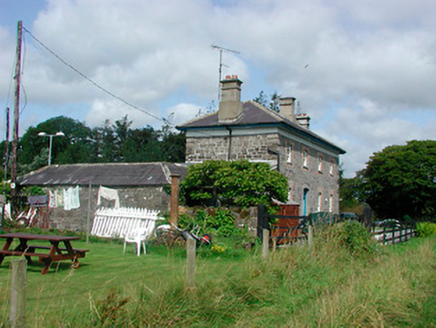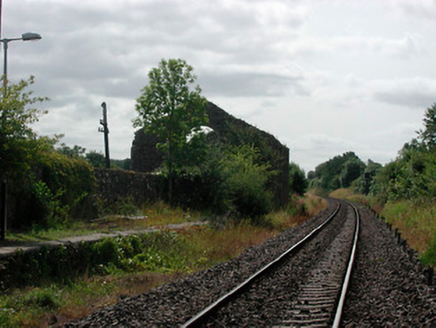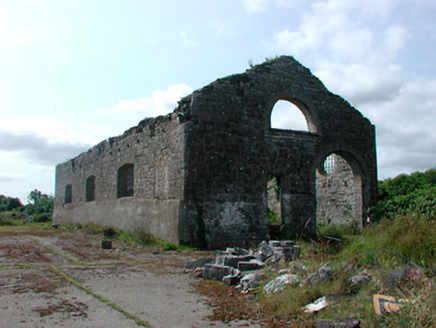Survey Data
Reg No
15304024
Rating
Regional
Categories of Special Interest
Architectural, Artistic, Social
Original Use
Station master's house
In Use As
House
Date
1850 - 1860
Coordinates
239060, 263049
Date Recorded
30/07/2004
Date Updated
--/--/--
Description
Detached four-bay two-storey former railway station and station master's house, built c.1855, now in use as private residence. Platform to west elevation with open veranda supported on four timber pillars. Single-storey outbuilding adjoining to south. Hipped natural slate roof with deep overhanging eaves, moulded timber eaves cornice, cast-iron rainwater goods and rendered chimneystacks. Constructed of coursed limestone over chamfered ashlar limestone plinth with rusticated limestone quoins to corners. Square-headed openings with replacement uPVC sash windows and cut stone sills. Segmental-headed doorcase with cut stone surround to east elevation with glazed timber double-doors with plain overlight above. Wide segmental-headed doorcase to platform (west) with cut stone surround with keystone. Set slightly back from road in complex of railway-related structures at Multyfarnham Railway Station with former goods shed to south, now roofless.
Appraisal
An attractive, well-maintained and well-detailed railway station that retains its early form, character and fabric. It was originally built by the Midland and Great Western Railway Company in 1855 to serve the Mullingar to Sligo line and closed in 1963. This fine building forms the centrepiece of an important group of structures associated with the former Multyfarnham Railway Station. It was probably built to designs by George Wilkinson (1814-1890), a noted architect of his day, who also completed the designs for a number of other railway stations for The Midland and Great Western Railway Company (on the Mullingar to Longford and the Inny Junction to Cavan lines) at this time. This building is very similar in style to the railway stations at Dromod, County Leitrim (30818010), and at Edgeworthstown, It was probably built to designs by George Wilkinson (1814-1890), a noted architect of his day, who also completed the designs for a number of other railway stations for The Midland and Great Western Railway Company (on the Mullingar to Longford and the Inny Junction to Cavan lines) at this time. This building is very similar in style to the railway stations at Dromod, County Leitrim (30818010), and at Edgeworthstown (13309002) and Longford Town (13004044). The fine limestone masonry and attention to detail is typical of Victorian railway architecture. It remains an important component of the architectural heritage of Westmeath and remains and appealing structure in a pleasant rural location.
